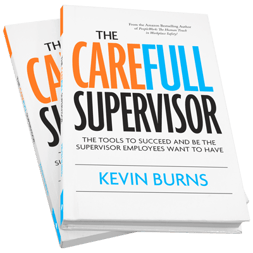If you’re handling crisis after crisis, you’re not leading your safety program - it is leading you. You might be in charge, but you’re not in command.

You’ve seen it: construction material plastics and debris flying through the air in high winds or caught in the protective fencing because the garbage bin was overstuffed. A disorganized, garbage-strewn work site is indicative of two things; apathy of construction site management and a poor safety culture from workers. But question a site manager on why there’s so much garbage, and you’ll hear that there are other crises to deal with.
Crisis intervention is not management, and it sure isn’t leadership. Let’s be clear, in this instance, the word leadership is used it to describe an attitude, a state of mind - not management. Leadership is an attitude but management is a position. You don’t have to be in management to be a leader.
If you’re handling crisis after crisis, you’re not managing your safety program. It is managing you. You might be in charge, but you’re not in command.
Poor time management skills (nothing to do with time really but more to do with assessing priorities and making decisions), poor communication skills, an air of smug superiority and a demeanor that is argumentative bordering on hostile when questioned about anything, and you have the all of the ingredients to create the antithesis of a leader.
So what makes a great leader in safety? There are four specific traits that will be the basis of creating a loyal following. If you are missing any of the four traits below, you are not a leader:
1Respect - Simply put, you can not give what you do not own. If you have no respect for your fellow workers or the people who are impacted by your lack of caring, you will garner zero respect. People will not follow you nor hold you in high regard. If you do not give your co-workers, your customers and the general public respect, expect the same in return. Respect is not bestowed by way of your title. Expectation of such is simply arrogance. Good people, caring people, have their own standards and won’t stick around long on a job site where the supervisor is full of himself. Respect is a two-way street.
2Organization - A clean and orderly work site is a safe work site. The appearance of your work site communicates your standards and expectations for those who enter the work area. Over-stuffed garbage bins, construction materials and plastics strewn about on the ground, free-for-all vehicle parking and an unwillingness to adhere to proper procedures in safety is a dangerous work site. Signage, hi-vis, PPE requirements, enforcement of OH&S regulations and daily safety meetings are the absolute minimum expected by employees and contractors on a job site. Anyone who doesn’t have time to attend to these has their priorities messed up and employees and contractors should dig in their heels and demand better.
3Communication - Nothing happens on a job site nor in safety without communication - crystal clear communication - devoid of any ambiguity. Employees, contractors and site personnel need to know what is not only expected of them, but of the site in general. Communication empowers people. Anyone who believes otherwise is a fool and is demonstrating their insecurities of their own inadequacies. The best work sites are the ones where supervisors aren’t fighting one fire after another (tweet this). Communicate your expectations, your plan, the daily updates, employee accolades and your willingness to entertain suggestions for improvement. If you’re hogging the spotlight and keeping information to yourself, you’re not focused on the job - just your own ego.
4Accountability - People will not follow someone who engages in blame and justifications for their continuing inaction in looking after the basics. Worse yet, are the supervisors who blame policy or someone else for their inaction. If you lack accountability, it is impossible to keep track of what you said to whom, what promises you made, what target dates were offered and ultimately, how to know what is going on right under your nose - in all corners of your workplace.
Rest assured, there are more leadership traits than four listed here. However, without these four traits, people will quickly lose faith in your ability to lead. When you lack leadership capacity, you are no longer managing - you are simply engaging in crisis intervention. Employees tire quickly of a litany of excuses and seemingly jumping from one crisis to another. It is debilitating and demoralizing. Not only will you turn over staff in this environment, you will find that your safety performance will drop dramatically.
Safety leadership attitude begins with respect, organization, communication and accountability.



